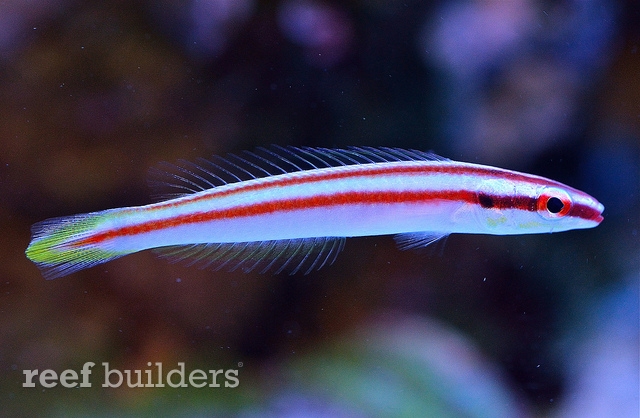Terelabrus flavocephalus is the newest species of hogfish to be described and added to the growing family of the ever popular marine wrasses. This third species of candy hogfish has been known from the Indian Ocean, Maldives to be precise, for many years now and its official description ties up the few loose ends we had in this unique group of colorful hogfishes.
Hardly a few months have gone by since we were formally treated to the official description of Terelabrus dewapyle but now we can officially refer to the Indian Ocean candy hogfish by a proper scientific name.

All three species of Terelabrus are characterized by a very slender body which is patterned by red and white stripes down the flanks of the body. The name for the Indian Ocean candy hogfish, Terelabrus flavocephalus brings in focus a subtle but distinctive feature of this fish, which is its pale yellow colored head.
By comparison, the also recently described Terelabrus dewapyle has a yellow stripe down the center of its body. Meanwhile, the species that kickstarted the genus, Terelabrus rubrovittatus shows yellow coloration mostly on its dorsal and anal fin, if at all.

The three species of candy hogfish all share the same motif but we can better appreciate the biodiversity of this group which spans from the Maldives in the Indian Ocean, through the Indo Pacific, to the northwest Pacific in Japan. Since they are mostly deeper water species, we wouldn’t be surprised to learn of more and different species of Terelabrus waiting to be discovered in some other deep, reef regions of the world. [Ichtyological Research]




